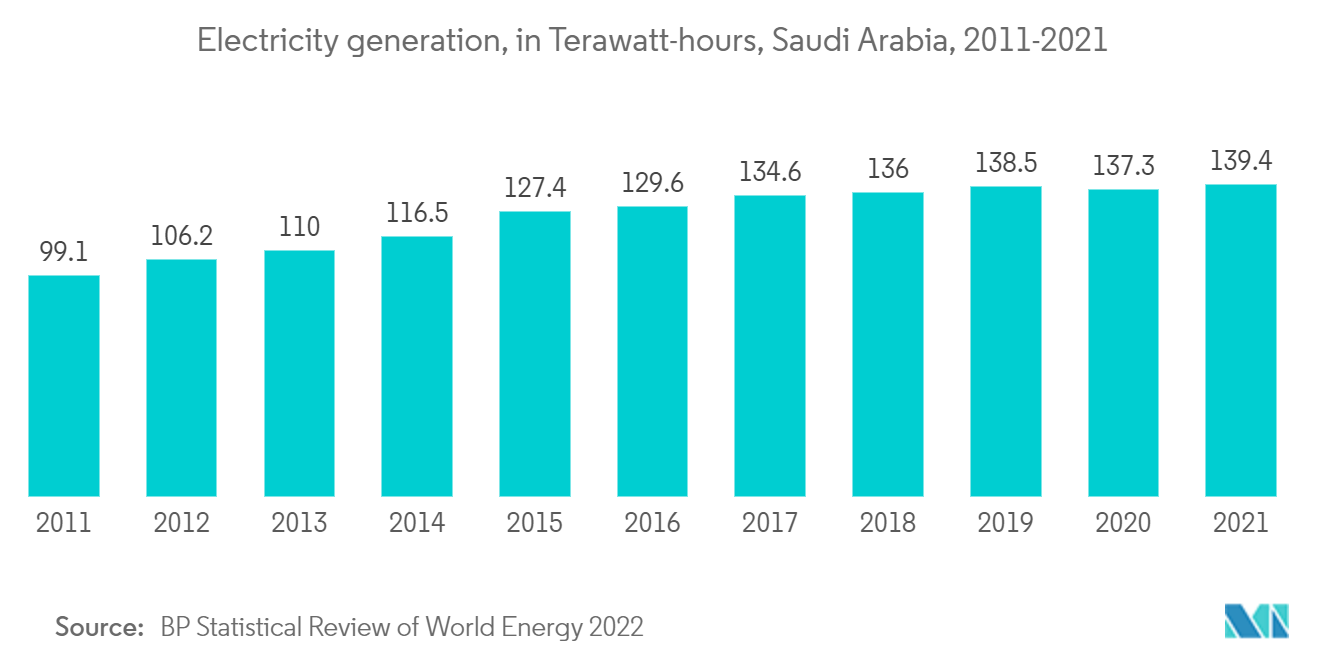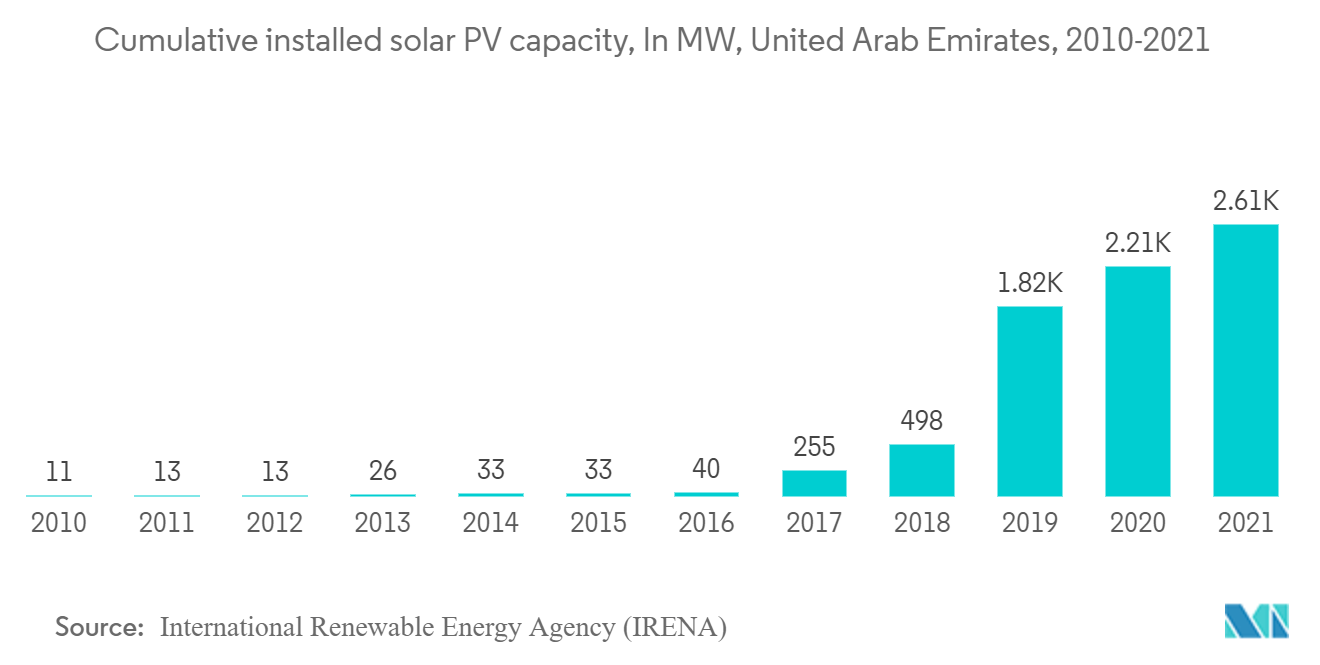Market Trends of United Arab Emirates Transformer Industry
This section covers the major market trends shaping the UAE Transformer Market according to our research experts:
Distribution Transformers Expected to Dominate the Market
- Distribution transformers are also known as isolation transformers. In electric power distribution, this transformer is used to alter high voltages to normal voltages like 240/120V. Different types of transformers are available in the distribution system, such as single phase, three phase, underground, pad-mounted, and pole-mounted transformers.
- According to the country's Energy Plan for 2050, it aims to diversify its power mix. Further, it envisages the production of 44% of power from renewables, 6% from nuclear, 12% from clean coal, and the rest from natural gas by 2050. Moreover, United Arab Emirates aims to invest AED 600 billion by 2050 to meet the growing energy demand and ensure sustainable growth for the country's economy. This energy transition is expected to trigger the massive deployment of distribution transformers in the country.
- Additionally, United Arab Emirates has expanded its power infrastructure as well as increased construction activity and establishment of business hubs, industries, and infrastructure. As a result, distribution transformers are in high demand, while government initiatives such as the Energy Plan for 2050 are expected to boost transformer sales during this period.
- For instance, in July 2022, The Dubai Electricity and Water Authority (DEWA) announced that the capacity of its current projects with the private sector exceeded 4,000 megawatts (MW), and investments totaled more than AED 40 billion.
- Approximately 130 state-funded development projects are going to be funded by the United Arab Emirates by 2023, according to the Ministry of Energy and Infrastructure, the country is investing AED 11.8 billion. According to the ministry, the development projects are going to be implemented as part of its five-year plan for 2018-2023. Among the nationwide developments are 70 government buildings. The ministry will also be implementing 17 health facilities projects and 26 for the Interior Ministry. There are plans to develop 15 public-accessible government buildings as well as 12 infrastructure developments for educational facilities.
- According to the BP Statistical Review of World Energy, the total electrical energy production increased by 1.5% in 2021 with the electricity demand that reached 139,400 GWh compared to 137,300 GWh in 2020.
- Therefore, based on the above-mentioned factors, the distribution transformer segment is expected to dominate the growth in the transformer market during the forecast period.

Increasing Renewable Energy Deployment is Expected to Drive the Market
- Increasing investment in renewable energy systems is expected to be a significant driver for the transformer market during the forecast period. The country has been investing heavily in renewables in recent years in a bid to move away from energy generation from conventional energy resources like oil and natural gas. Increasing integration of renewable energy in the region's electricity demand makes the usage of transformers necessary to maintain a steady supply of electricity as power generation from renewable energy systems can sometimes be unsteady.
- United Arab Emirates has undertaken significant strides over the past several years, leading the region's drive toward renewable energy, particularly in the solar power sector. According to the International Renewable Energy Agency (IRENA), the cumulative solar PV capacity in the United Arab Emirates reached about 2.6 GW in 2021 from 2.20 GW in 2020. The country has proven that it holds one of the best solar resources globally while supporting economic and regulatory policies, helping its clean energy program to excel.
- Further, according to the International Renewable Energy Agency (IRENA), United Arab Emirates is expected to install more than 18 GW of solar energy by 2030, which, in turn, is expected to drive the demand for transformers as it is essential to integrate the renewable power sources. Thus, creating vast opportunities for market players in the future.
- In October 2021, United Arab Emirates announced to invest AED 600 billion in clean and renewable energy over the next several years to achieve net-zero emissions by 2050.
- Hatta pumped storage power plant is a first-of-its-kind development in the Gulf region and in the United Arab Emirates. This project is being developed by Dubai Electricity & Water Authority (DEWA) and is expected be commissioned in early 2024. The project is going to diversify the energy mix in Hatta and support its economic, social, and environmental development. In addition, it is expected to meet Dubai's Clean Energy 2050 goal to make 75% of Dubai's total energy production clean by 2050.
- In May 2022, Masdar, a global company that develops renewable energy projects, has announced a agreement with the United Arab Emirates-based National Petroleum Construction Company (NPCC), an engineering, procurement, and construction company subsidiary of National Marine Dredging Company (NMDC) to explore in offshore wind, green hydrogen, and other renewable energy technologies developments.
- Hence, increasing investments in the renewable energy systems in the country is expected to drive the transformers market in the forecast period.


